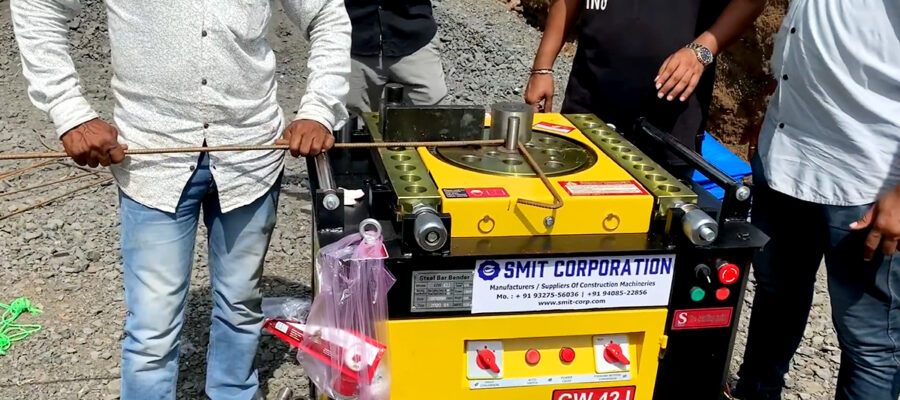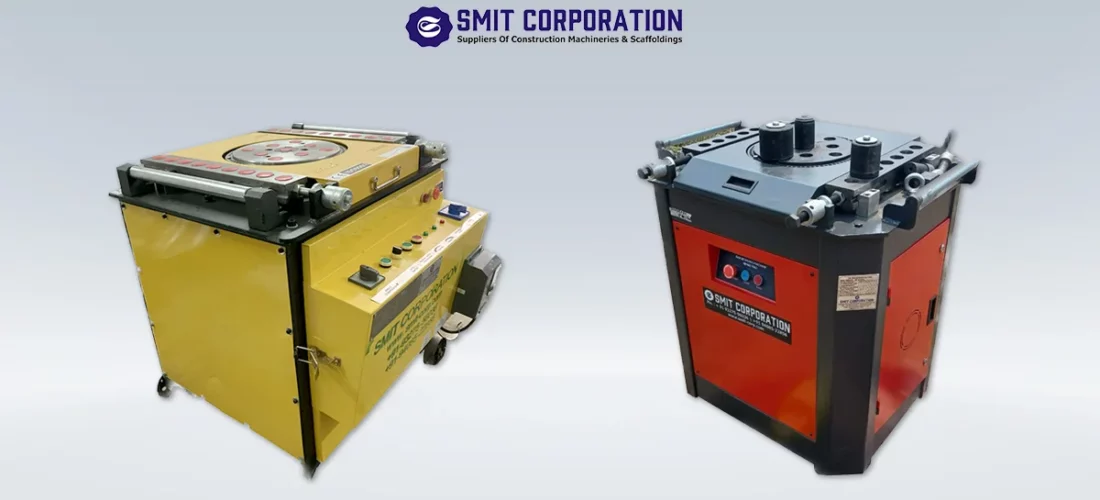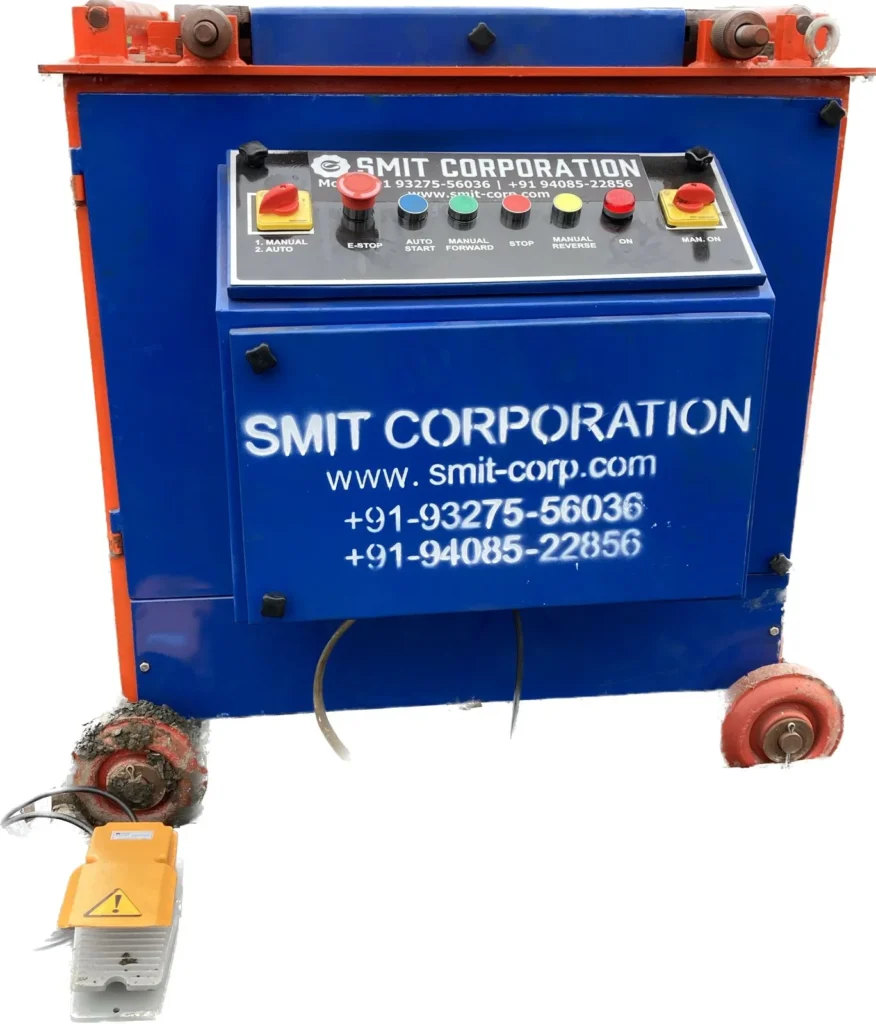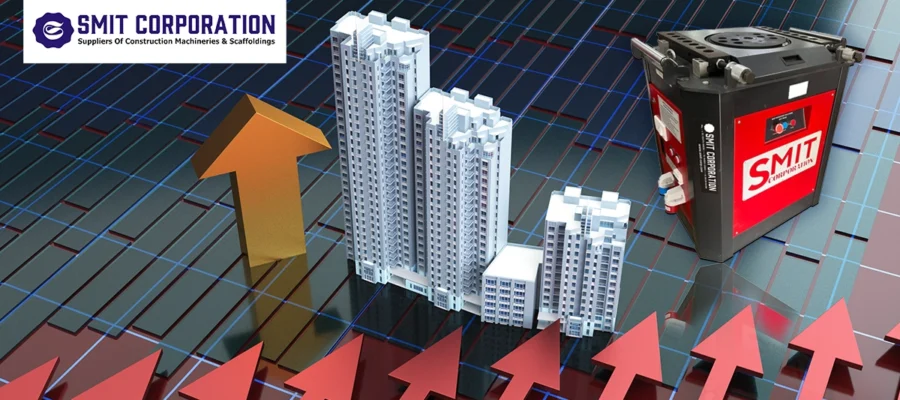
- April 23, 2024
- By: smitcorp
- in: Bar Bending Machine

In the ever-evolving realm of construction equipment, Smit Corporation stands as a beacon of innovation, leading the way in the shift from manual to automatic bar bending processes. Join us on a captivating journey through time as we delve into the transformative impact of automation in the construction equipments.
The origins of bar bending machines date back to the mid-20th century, representing a pivotal era of innovation in the construction industry. Early machines laid the groundwork for what would become an integral component of contemporary construction processes. The historical context highlights the gradual progression towards more efficient and sophisticated methodologies. Today, these rod bending machines have become an indispensable tool in the construction industry, streamlining the process of bending and shaping reinforcement bars with precision and speed. The continuous evolution of these machines reflects the industry’s constant pursuit of efficiency and effectiveness in construction methods.
Manual bar bending, once the cornerstone of construction practices, relied heavily on skilled labour and traditional tools. While effective for simpler projects, this manual approach faced inherent limitations as construction endeavours grew in scale and complexity. Understanding the roots of manual bar bending sets the stage for appreciating the subsequent need for a more advanced and efficient solution.
The manual approach to bar bending presented a series of challenges that became increasingly apparent as construction requirements evolved.
Manual bar bending involves significant labor hours, leading to increased operational expenses. This cost factor includes wages, training, and the overall management of a manual bending workforce.
Manual processes are inherently slower, consuming valuable time in construction projects. Delays in bending each bar individually can cascade into longer project timelines, affecting overall efficiency.
Human error is a constant risk in manual steel bending, leading to inaccuracies in measurements and shapes. These errors may necessitate rework, contributing to project delays and additional costs.
Manual bar bending poses safety challenges due to the physical nature of the task. Workers are exposed to risks such as musculoskeletal injuries and fatigue, impacting both their well-being and overall project safety.
The turning point in the evolution of bar bending processes came with the introduction of automatic bar bending machines. Smit Corporation emerged as a pioneering force in embracing advanced technologies that revolutionized the efficiency and precision of rod bending. The integration of automation marked a paradigm shift, streamlining processes and setting a new standard for construction efficiency.
The transition from manual to automatic rod bending ushered in many benefits and marked a quantum leap forward in construction efficiency.
Automatic metal bending machines ensure precise and accurate bending according to predefined specifications, eliminating the margin of error associated with manual processes.
Automation significantly speeds up the bending process, leading to higher productivity. Automatic machines can handle multiple bars simultaneously, reducing the overall time required for a project.
While initial investment costs might be higher, automatic bending machines contribute to long-term cost savings. They minimize labor expenses, enhance efficiency, and reduce the need for rework, ultimately improving the overall cost-effectiveness of construction projects.
Automated steel bending reduces the physical strain on workers, promoting a safer working environment. The risk of injuries and fatigue associated with manual bending is significantly minimized.
The precision of automatic bending reduces material waste by minimizing errors. This not only contributes to cost savings but also aligns with sustainable construction practices.

Today’s automatic bar bending machines leverage cutting-edge technologies, notably Computer Numerical Control (CNC) systems. These sophisticated systems empower precise control over the bar bending process, accommodating complex patterns and enhancing overall operational efficiency. The integration of CNC technology represents a stride towards a future where automation not only meets but exceeds the demands of the construction industry.
In conclusion, the message is resounding—the future of bar bending lies in automation, and as a leading bar bending machine manufacturer in Gujarat, Smit Corporation stands as a pioneer in this transformative journey. Embracing automation is not merely a choice; it has become a necessity for construction companies aiming to stay competitive and efficient in the ever-evolving landscape of the industry. Smit Corporation’s commitment to innovation paves the way for a future where construction processes are not just effective but also seamlessly integrated with cutting-edge technology.
Elevate your construction processes with Smit Corporation’s cutting-edge automatic bar bending machines. Explore our innovative solutions at Smit Corporation and embark on a journey toward precision, efficiency, and the future of construction. Revolutionize your projects with Smit Corporation, where the evolution from manual to automatic shapes the construction industry.



We, Smit Corporation established in the year 2018 at Surat and being ISO certified, we are instrumental in providing innovative construction machinery and proficient after sales services & spares at the affordable price, that would contribute to revolutionize the construction equipment segment in India. We are the authorized dealer of Wacker Neuson Equipments – a leading global manufacturer of light and compact equipments, offering Indian customers a comprehensive product and service range. Along with it, we deal in all kind of Construction Machinery like Bar Bending Machines, Bar Cutting Machines, Tamping Rammer, Concrete Vibrators, Suspended Platforms & Walk Behind Rollers. We’ve served many prestigous government projects & private projects as well. Backed by the expert team having vast technical knowledge & experience in customer relationship, We are sure to pave you a smooth road to success in any construction project.
2. 7/1165 B, Asarawala Estate, B/h Hamd Park, Rampura, Surat, Gujarat, India – 395003
Monday – Saturday : 9:30 am – 6.30 pm
Connect Socially